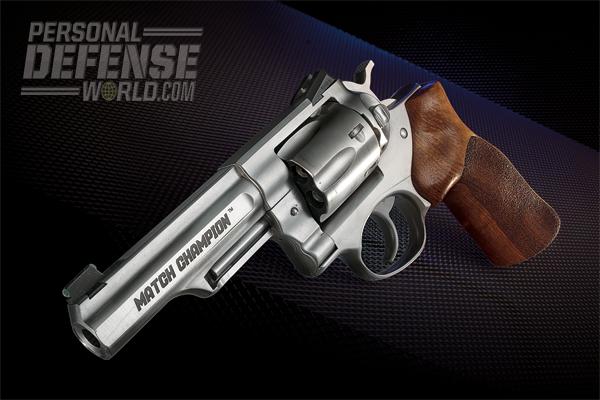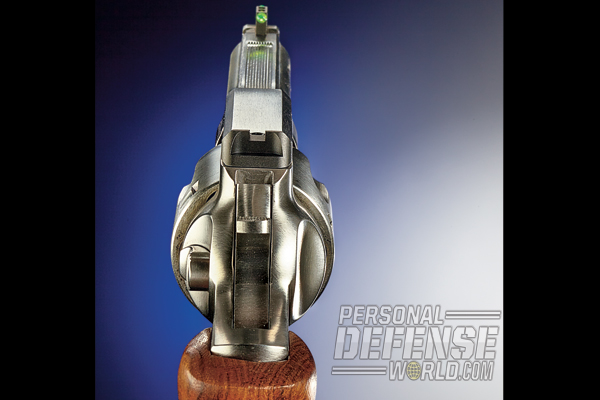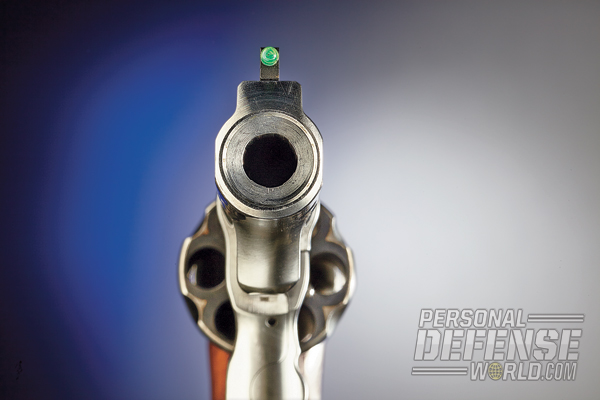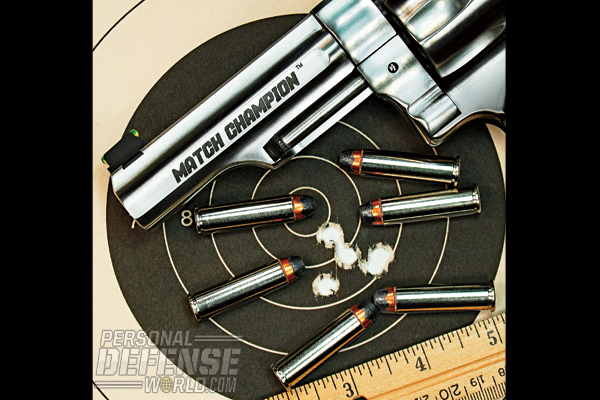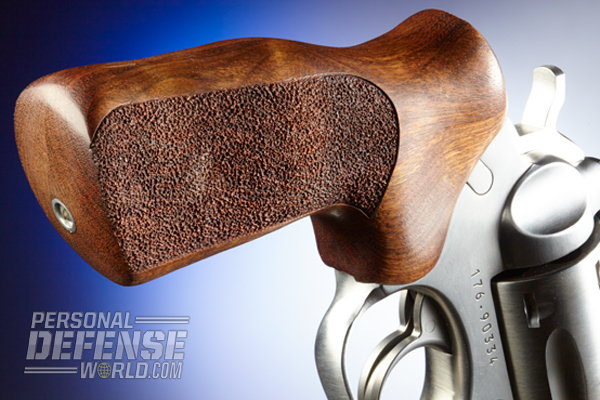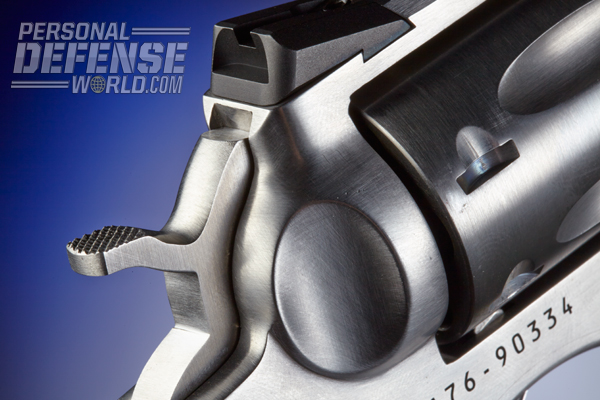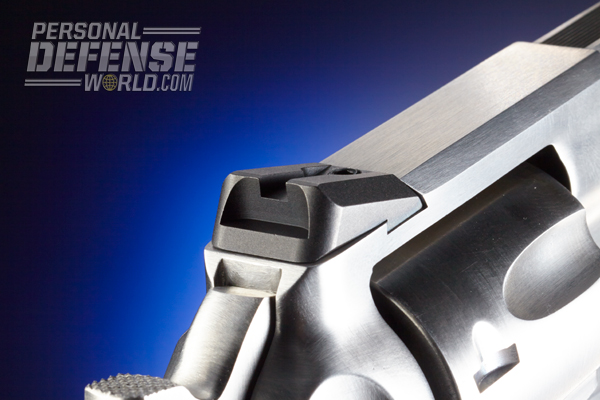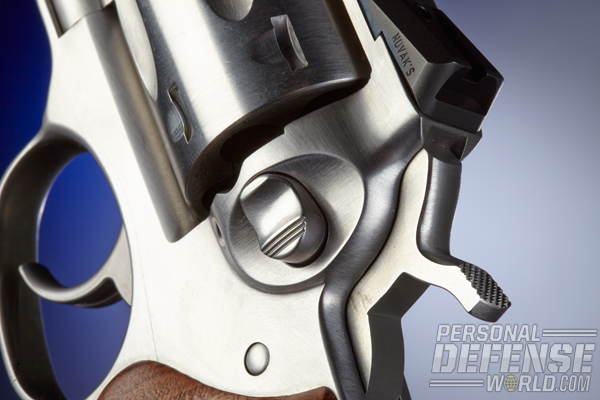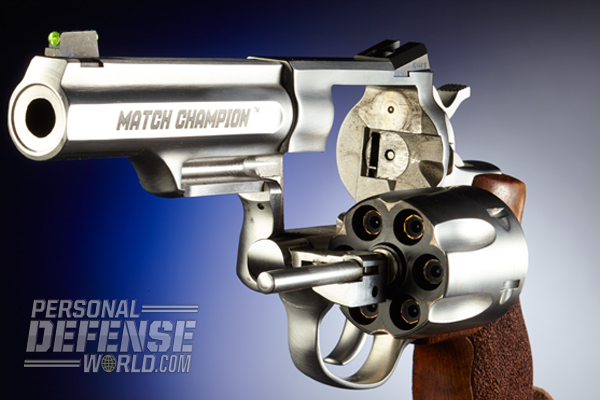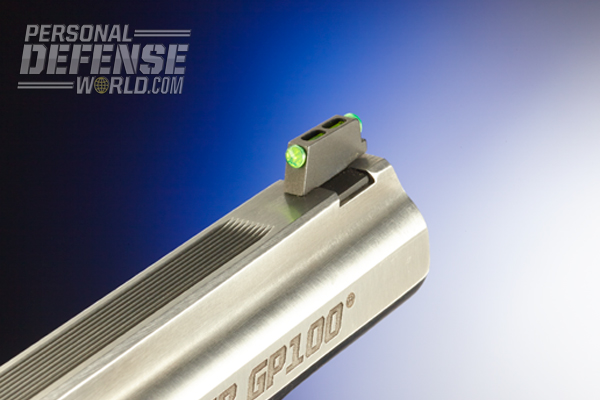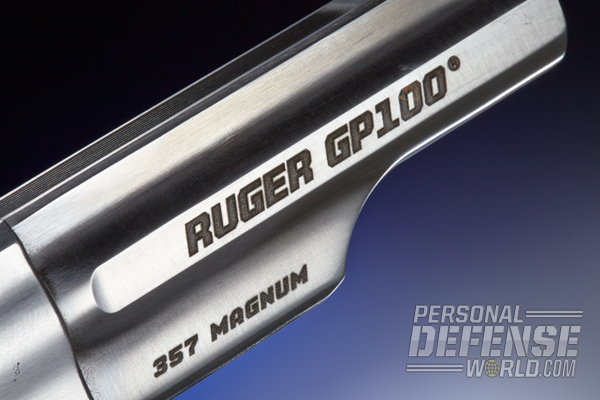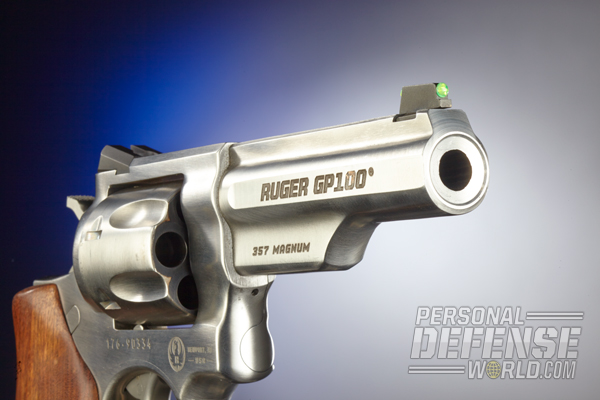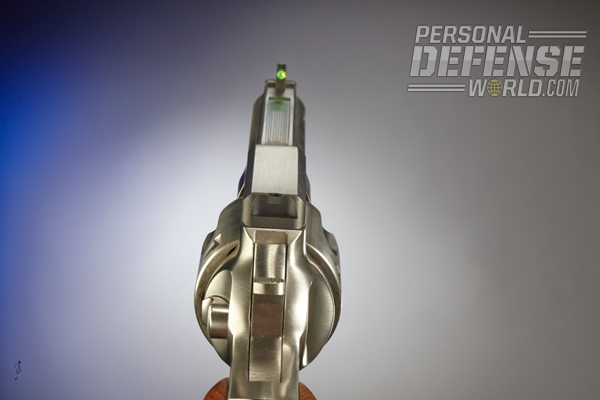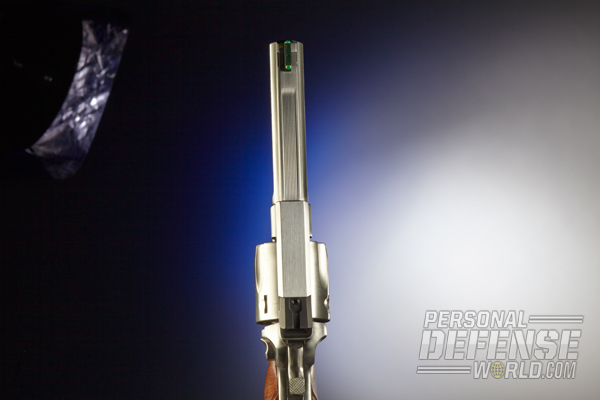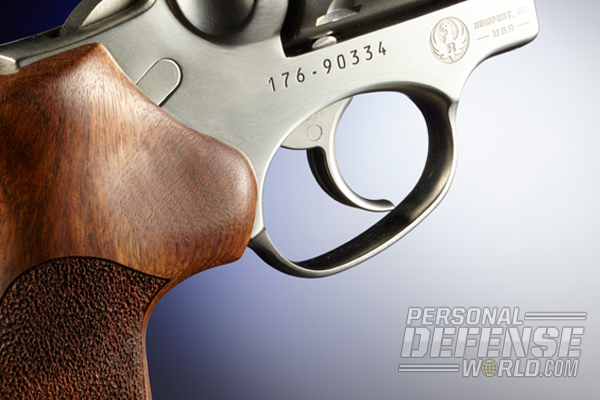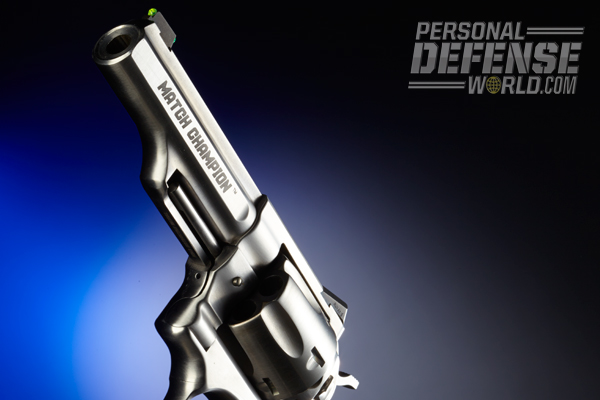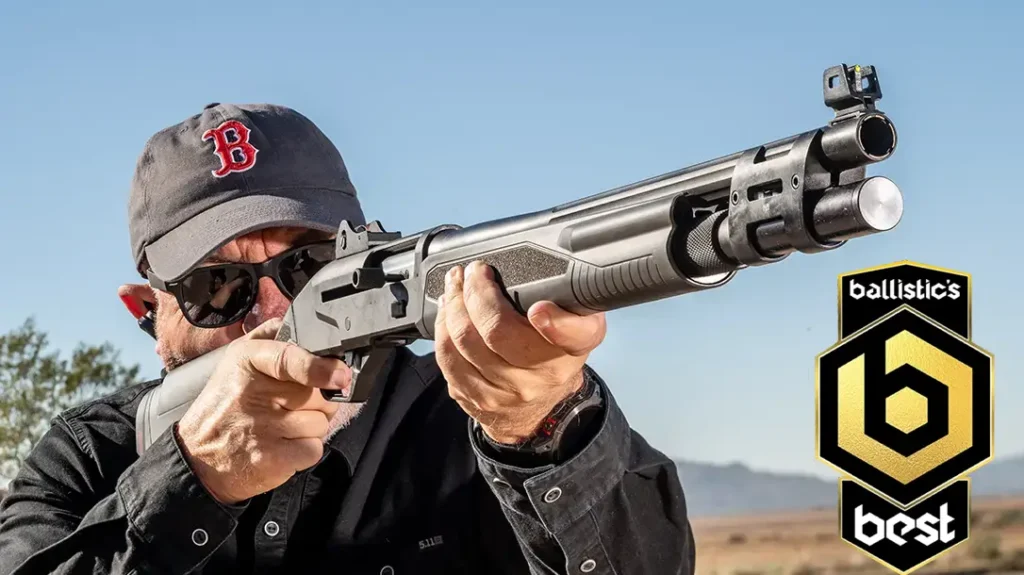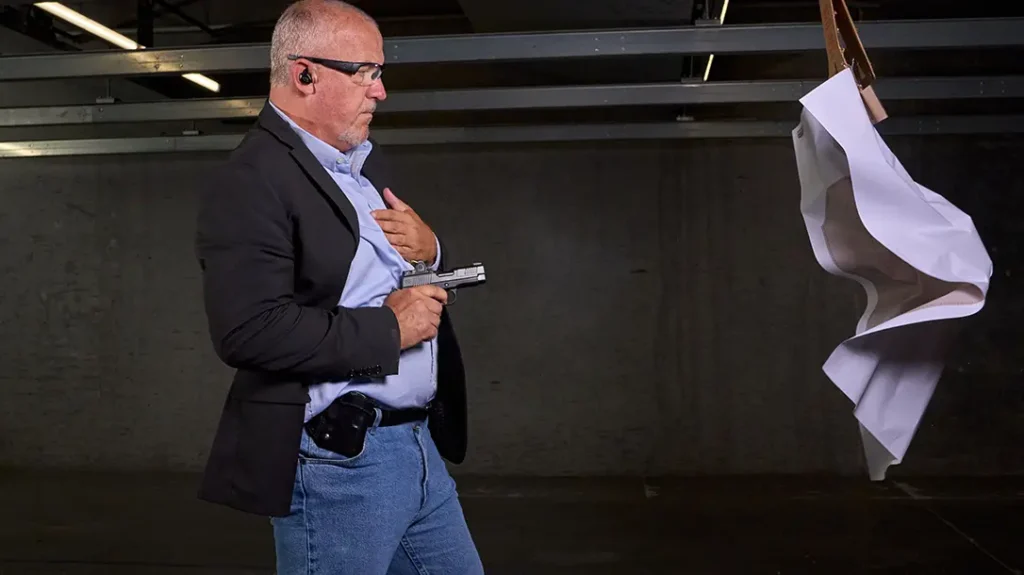During my nearly 40-year personal and professional relationship with Ruger products, many Ruger guns have passed through (and stayed in) my hands. My biggest preference is for the company’s double actions (DA), and among these the GP100 in .357 Magnum tops the list. You may find out there a more svelte .357 revolver, and you may find one that’s more accurate, but in my well-founded opinion there is no better all-around DA .357 Magnum revolver in terms of strength, power, longevity and outright dependability than the GP.
Developed as a product-improved magnum based on Ruger’s first single-action (SA) revolver, the Security Six, the GP100 was deliberately designed to deal with the higher pressures of the .357 Magnum round. The topstrap is beefy; the frame is hefty at the point where the barrel attaches; the forcing cone walls are thicker; the cylinder chamber walls are not potentially “weakened” by having bolt notches cut into the thinnest sections; the frame itself is a solid construct with no sideplate for internal access; the actions rarely go out of time with extensive use; the coil mainsprings don’t break or lose tension; the cylinder crane latches securely into a slot in the frame under the barrel to maintain positive lockup and alignment; and the gun uses Ruger’s famous transfer bar to reduce the chances of an accidental discharge. These features are also duplicated in the smaller SP101 and the bigger Redhawks, and the company’s been paying quite a bit of attention to the DA revolvers in the past couple years, predominantly with the SPs in both rimfire and centerfire development. In the meantime, there’s a brand new GP100 out, the Match Champion, and this one should be a winner in more than one area.
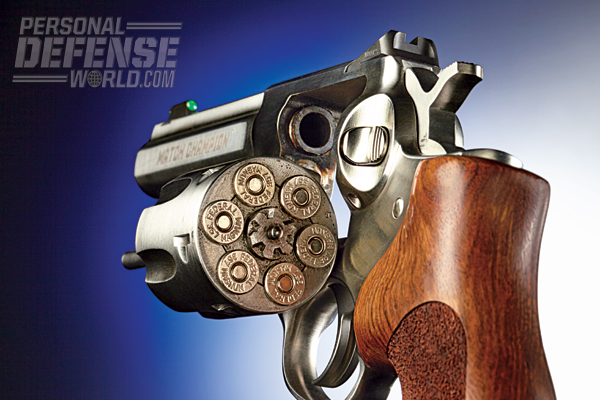
Gun Details
Advertisement — Continue Reading Below
Kurt Hindle, product manager at Ruger, starts us out: “Ruger has always made great revolvers, but we wanted to make a revolver that was geared to the competitive shooter and had some additional features that you would find in a custom revolver, while still being able to produce it in a production environment.” That sets up the basic premise. The aptly named Ruger GP100 Match Champion is intended primarily (but not exclusively) as a ready-to-go Ruger for International Defensive Pistol Association (IDPA) competition. Hindle goes on, “This is Ruger’s first product designed and produced for the competitive revolver market with features that the IDPA shooter is looking for in a package that has a great reputation for strength and reliability.”
For those not familiar, IDPA competition is based more on “practical” equipment than expensive and exotic racegun hardware, and competitors use production guns reflective of what you might actually carry and use in everyday life. Besides being more realistic in developing and testing defensive problem-solving skills, IDPA is also much less expensive to participate in. If you have a carry gun, a holster and speedloaders or spare mags to reload with, you’re in. That is, as long as your gun meets the rules and hasn’t been too exoticized. No need to spend a couple grand on a tricked-out gun that’s only good for competition. Aside from realism and affordability, one other important benefit of IDPA events is that you can hone your skills with the same gun that will be there for you should you ever need to use it.
While the GP100 Match Champion’s brushed stainless finish is nothing new, many of its other features are. Up top are Novak sights. The rear sits in a solid, flat-topped frame with no longitudinal milled cuts for either the fixed-sight model’s groove or the adjustable-sighted model’s sight base recess. The black Novak unit is positioned in a dovetail for windage adjustments and uses a hex-head screw to retain it in place. This frame’s topstrap is unique to the model, with a lowered section just behind the sight to allow it to ride low enough to line up with a relatively tall, green fiber-optic front blade. There’s no way to adjust for elevation. Ruger says the gun is factory-set for 158-grain .357 Magnum loads; the sight combo was chosen for quick visibility. While there are those who dislike fiber optics, this is one of the better ones on the market, with a very well-protected light pipe nowhere near as vulnerable to hard knocks as more exposed types.
Advertisement — Continue Reading Below
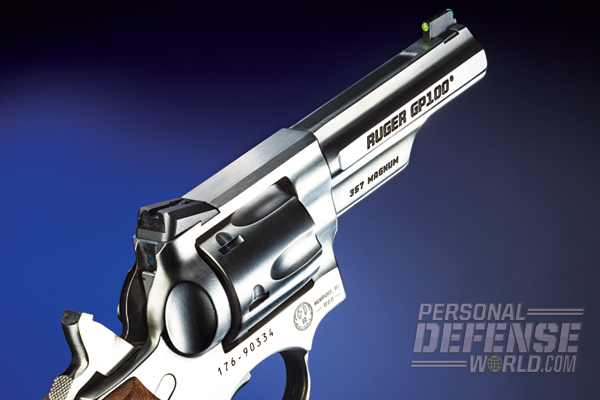
Out front, the 4.2-inch barrel’s profile immediately says this is not your everyday, run-of-the-mill GP. Slab sided and half-lugged, with loud and proud laser-engraved “Match Champion” on one side and “Ruger GP100” on the other, the gun doesn’t have either the blocky look or the unnecessary weight of a normal full-length barrel lug.
The GP100 Match Champion also incorporates the relatively new metal-injected-molding (MIM) trigger, which sports a well-rounded face that I find a definite improvement over the older cast triggers with shoulders on both sides and sharp edges on the back. In migrating MIM parts into the DA revolver lines, Ruger made the decision to retain a cast hammer on GPs for the foreseeable future, based on its impression that the contours required by an MIM version would be downright ugly and unpopular with shooters. The result is that, despite signs of lightly “melted” edges on barrel, frame and cylinder, the sharp edges and corners created by the checkering process were left on the cast hammer spur, where they’ve been eliminated on the smaller SP101’s MIM hammer. Ruger could address that hammer issue at the factory; it would save people like me who find it annoying from having to spend 10 minutes with a file on a new GP. Looking at a full side profile of the new model, you may also notice that the cylinder’s been taper-contoured at the front end, giving a new shape to the flutes. If you look close with the cylinder open, you can see the chambers are lightly chamfered at the back to facilitate quick speedloader use.
Bringing up the rear, Ruger’s contracted with Hogue for one-piece, wood Monogrips of the non-finger-grooved variety. These Hogue grips have a unique-to-the-model stippled texture instead of the checkered or smooth surfaces that the company also produces. Inside, both hammer and trigger are stainless steel washer-shimmed, and the action surfaces on both are polished. These are internal slick-ups you’d either do yourself or pay your friendly neighborhood gun mechanic for—all done as part of the factory package to improve the action for competition or regular carry.
Advertisement — Continue Reading Below
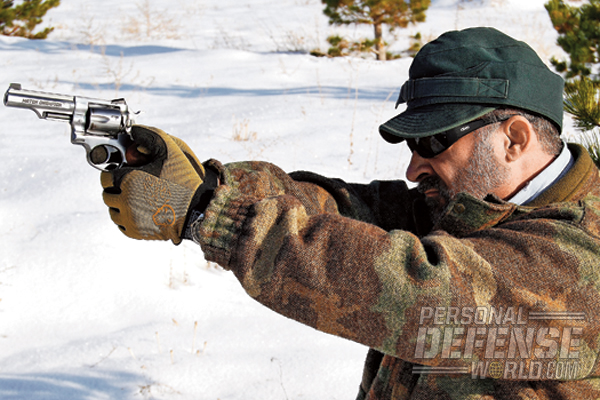
Range Time
Realizing that the GP100 Match Champion may easily find itself riding asphalt streets and high-timbered trails in concealed or open carry leather, I ran five premium hollow-point (HP) factory loads through the new revolver off my trusty Outers Pistol Perch at 25 yards on a sunny, 18-degree day in December, and chronographed them at 15 feet.
“The GP100 Match Champion’s semi-custom touches combine with Ruger’s legendary durability to make this pistol match-legal and street ready…”
Out of the box, the Hogue grooveless grip was a good fit in my hand, feeling slightly thicker in cross-section than the standard-issue Hogue rubbers that come on the GPs nowdays, but with less front-to-back bulk and length than the finger-grooved Hogue wood Monogrips. It turned out to be slightly less comfortable in the hand when firing the gun than other styles, but the stippling wasn’t abrasive in the slightest, even with the highest recoil levels produced by the hot Buffalo Bore 125-grain rounds.
Advertisement — Continue Reading Below
My best five-shot group, which shows the potential of the GP100 Match Champion, was a 0.81-incher, acquired with a 15-year-old box of Remington’s no-frills 158-grain semi-jacketed HPs. The combined average group size of five loads and four bullet weights was roughly 2.5 inches. For IDPA applications, this is better than absolutely required, and for practical defense it is more than adequate. The DA pull was smooth; the SA pull had a barely detectable trace of travel before breaking at 4.25 pounds. The green sight dot contrasts well against the black notch, and that rounded trigger face is a definite improvement. I also like the half-lugged balance. The Novak anchor screw loosened enough toward the end of the session to suddenly jump the point-of-impact cleanly from the aim-point target to the one stapled right next to it; the dovetail fit isn’t tight enough to retain the sight base on its own, so make sure you snug that screw down once you get your zero in. And, should you be wondering if the dovetail compromises the strength of the topstrap, I refer back to Ruger’s Kurt Hindle again. “Our engineers do run Finite Element Analysis as part of the design process, and then we confirm the analysis through instrumentation and, of course, endurance testing. The topstrap thickness with the cut for the dovetail is not an issue at all.”
The GP100 Match Champion’s semi-custom touches combine with Ruger’s legendary durability to make this pistol match-legal and street ready. Another GP100 has joined the family, and it may well become your favorite.
For more information, visit http://www.ruger.com.
Advertisement — Continue Reading Below
